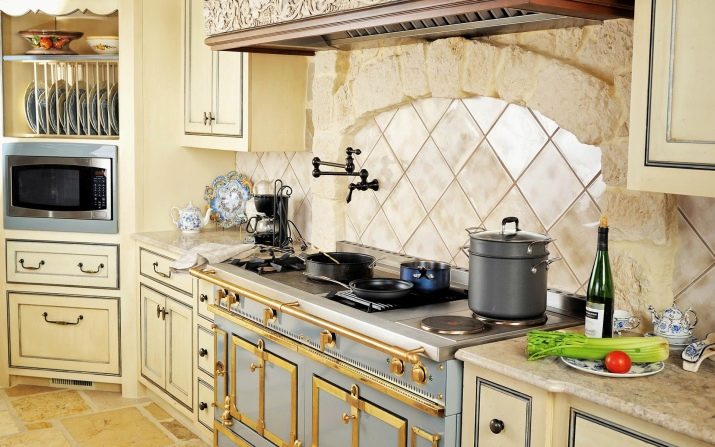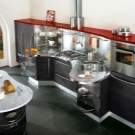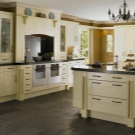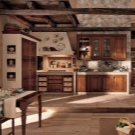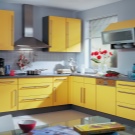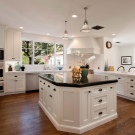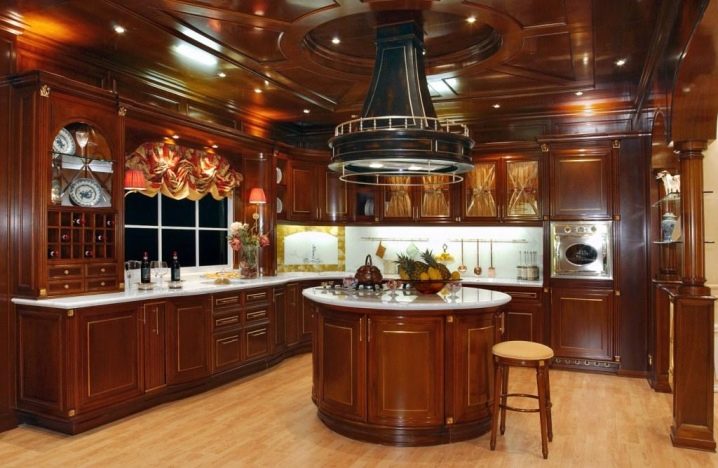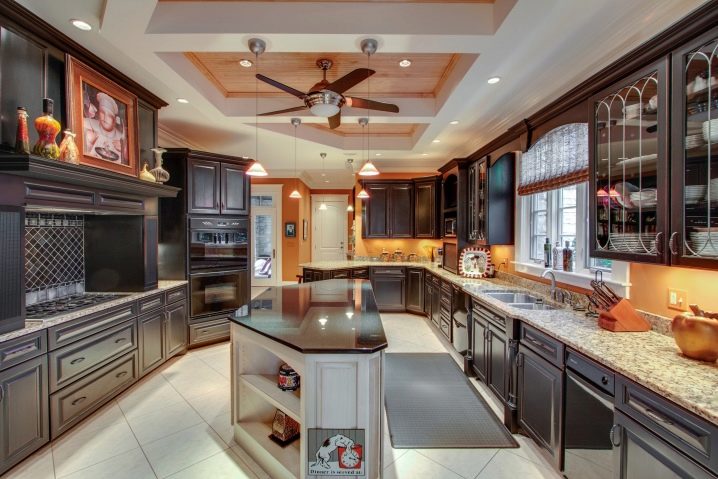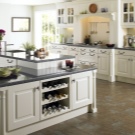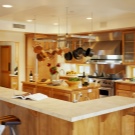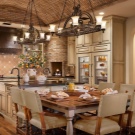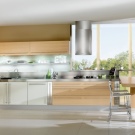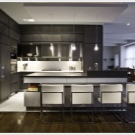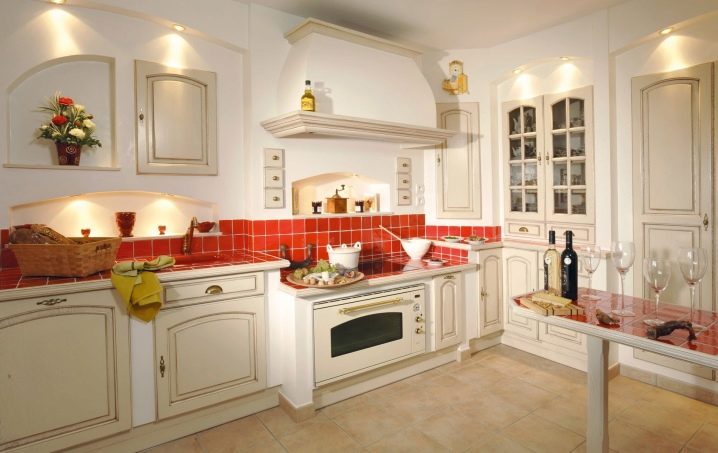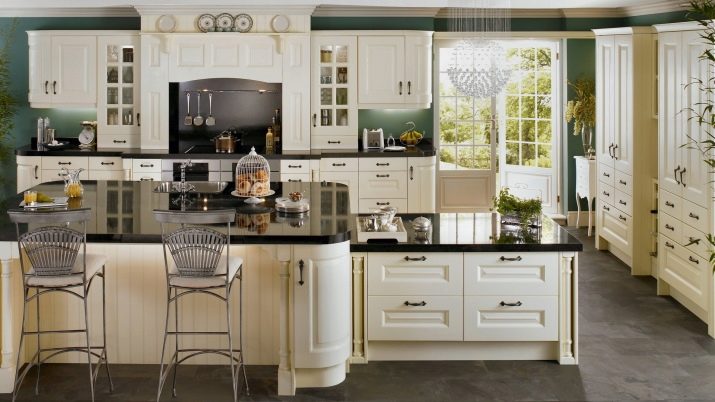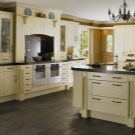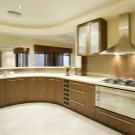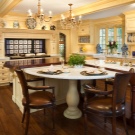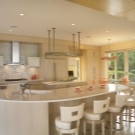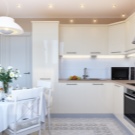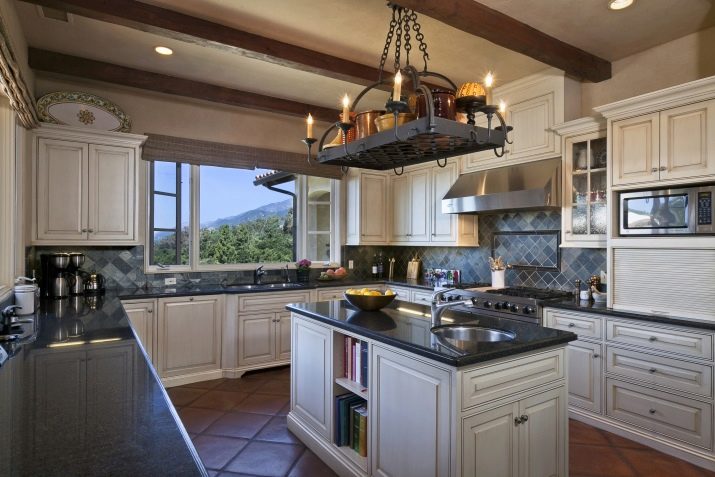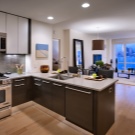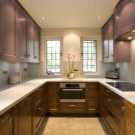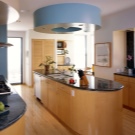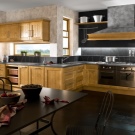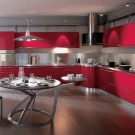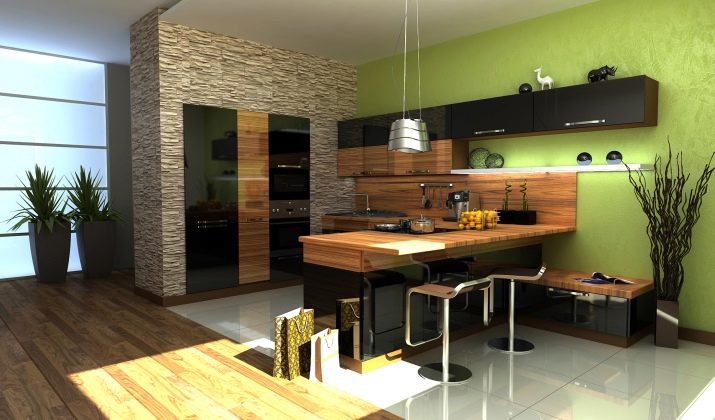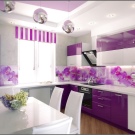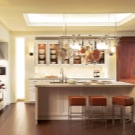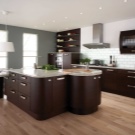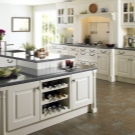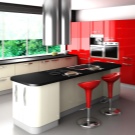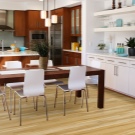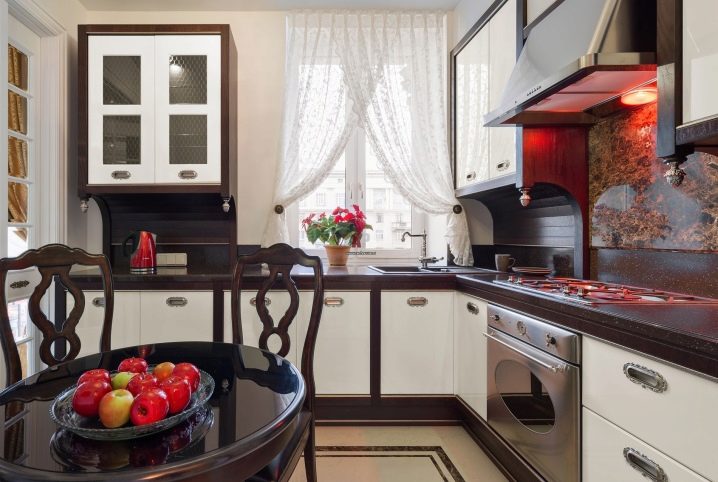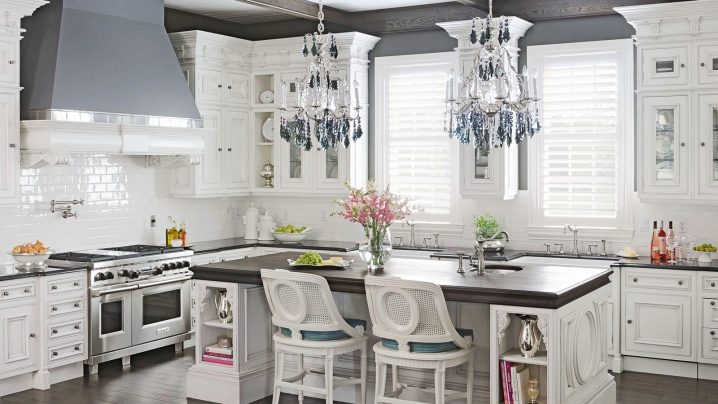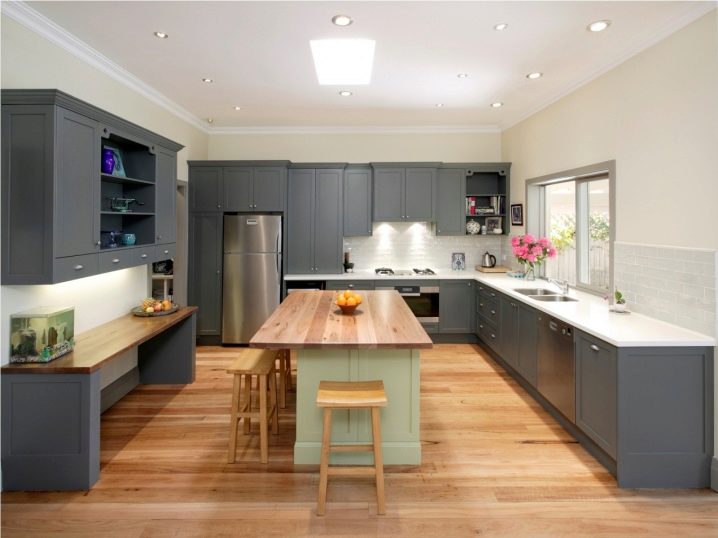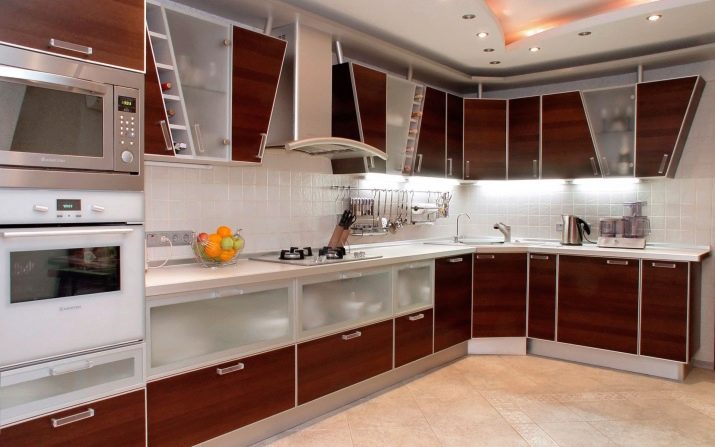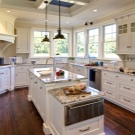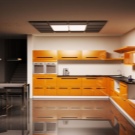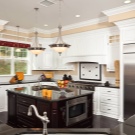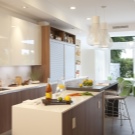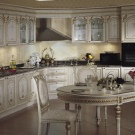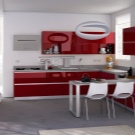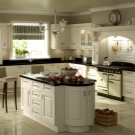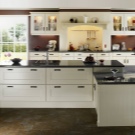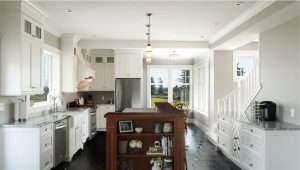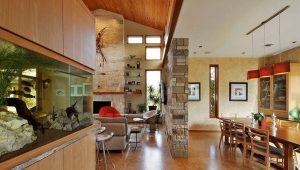Repair the floor and walls in the kitchen
The kitchen is the part of the dwelling in which a person spends a lot of time. This leads to the fact that all surfaces in this room are subjected to significant loads and wear out quickly, which leads to the need for repairs. Most often it is necessary to restore the finishing of the floor and walls. These elements are amenable to various types of loads, so when performing repair work it is very important to consider these features.
Align the walls
The process of repairing wall surfaces in the kitchen often involves aligning them. This is done in order to optimize the future installation of various finishing materials, as well as to create a pleasant interior in the room.
Align the walls in several simple ways:
- Grinding involves the alignment of previously plastered surfaces. To do this, simply remove a small layer of plaster using emery paper to achieve the desired effect.
- In the presence of significant differences, it is desirable to conduct plastering of all walls, which allows them to be leveled. Here, conventional cement and sand based solutions are used, but others may occur. After performing such operations, it is desirable to prime the surfaces additionally in order to strengthen their structure.
- Alignment sheets of drywall. This technology allows you to significantly simplify the entire process and get a flat plane. The fastening of this material can be carried out either on special profiles or directly to the wall with the help of dowels.
When carrying out such operations in a panel house, many experts recommend taking care also of wall insulation (internal or external). This will not only reduce heat loss, but will not allow temperature changes to significantly affect the finishing layer of the material.
Floor preparation
Repair of the floor involves the preparatory operations to provide a solid foundation that can withstand significant loads. The technology of alignment and preparation of such systems depends on the chosen finish:
- Tile. Such materials are placed on the most even surface.Theoretically, ceramic tiles can be laid on wood or plywood, but experts recommend using concrete surfaces for such purposes. Self-leveling mixtures with your own hands are quite simple.
- Laminate or parquet. These materials are also mounted on flat surfaces, but plywood sheets are already used as a substrate. Their installation is also desirable to produce on a cement or wooden relatively flat base.
Please note that such preparatory work in some cases are made with the removal of existing coverage. Very often this can be found in the "Khrushchev", where the floor and walls are often very uneven and have large deviations from the ideal parameters.
Materials for finishing the walls in the apartment
The peculiarity of the kitchen is that here all surfaces are exposed to various substances from ordinary steam to splashes of hot oil, etc. Therefore, when choosing materials for finishing walls, they are guided by the principle of ensuring not only a unique design, but also practicality. Today, experts recommend several types of materials to cover kitchen walls:
- Wallpaper.Usually in such premises prefer washing or painting materials. This allows you to maintain their presentable appearance for a long time. Sometimes you can use other types of similar materials, which combine and create a designer division of the kitchen into several functional areas.
- Paint. These materials, although quite practical, are rarely used in wall design.
- Decorative plaster is one of the newest products that allow you to create unique textures on surfaces. Moreover, such substances can be subjected to staining or varnishing, which will protect them for a certain period. Decorative plaster used by many designers to create beautiful and original interiors.
- Ceramic tile. This material is not the main one when decorating walls, although it can theoretically be done. Often, with the help of it, the working space is protected near the stove or sink, and everything else is covered with wallpaper or plaster.
- Wooden or plastic panels are practical products that fit perfectly into any interior.Differ in a high practicality and beautiful appearance. It should be noted that the tree needs additional protection, which serves as a varnish.
We select the type of floor covering
This surface is constantly subjected to significant loads, so it must calmly withstand them. Experts recommend using several basic materials for solving such problems:
- Linoleum. This product is available in several formats and colors. With it, you can create practical and beautiful floors. Please note that installing such a coating is relatively simple and does not require the use of auxiliary fasteners or adhesives. Also, linoleum has very good performance sound and heat insulation, and its service life may exceed 10 years. Perfect for both large halls and kitchens with an area of 9 square meters. m
- Laminate. Such substances are small panels made of several layers of different wood. In this case, the surface of the laminate can imitate not only wood, but also stone, marble, etc. Suitable for almost any design. When choosing such a coating, it is advisable to give preference only to water-resistant varieties and with quality indicators of resistance to stress.Installation is relatively simple, but requires adherence to a certain sequence and a very flat floor, as this may cause squeaks.
- Ceramic tile is one of the most popular products that are used in the kitchen when organizing floors. This material also has a significant number of colors, shapes and sizes. This makes it possible to create very beautiful and original designs. Ceramic tiles are highly durable and resistant to abrasion, which makes it possible to use it for more than 10 years without the need for renovation. Fixing the tile is performed on special solutions, which makes it possible, even in the absence of skills, to do it relatively well.
Sequence of operations
Conducting repair work in the kitchen involves not only leveling and finishing, but also a complete redevelopment. These operations are performed in a specific order:
- Initially, a plan is created for the placement of all furniture, electrical appliances, etc. This will give the opportunity to properly place all the sockets.When it is just planned to update the wall covering, there is no need to carry out these procedures.
- The next step is the alignment and decoration of the walls. Please note that if you have completely removed the old coating, then it is advisable to replace the electrical wiring with a new one. This is done taking into account the power of all the instruments you use.
- The final stage is to finish the floor. This process involves its alignment, reinforcement and coating with decorative materials. All such operations are carried out using special technologies, which depend on the type of coating you choose and the basic requirements for it.
All these works are quite complex and require significant skills. Often they are performed by several specialists working with specific materials. You should not proceed to perform the decoration of the walls and the floor yourself, if you have not carefully studied modern technology.
We select the plinth
This attribute of the interior plays an important role in its design. Today, such structures are made of either wood or plastic. The latter types are more practical, since they do not require a protective coating of varnish that cannot be said about wood.
But when choosing plinths, first of all, you need to be guided by the design of the kitchen and the applied finishing materials. They must be selected in accordance with the color scheme of the floor, which will make it possible to create a harmonious transition from a horizontal to a vertical surface.

